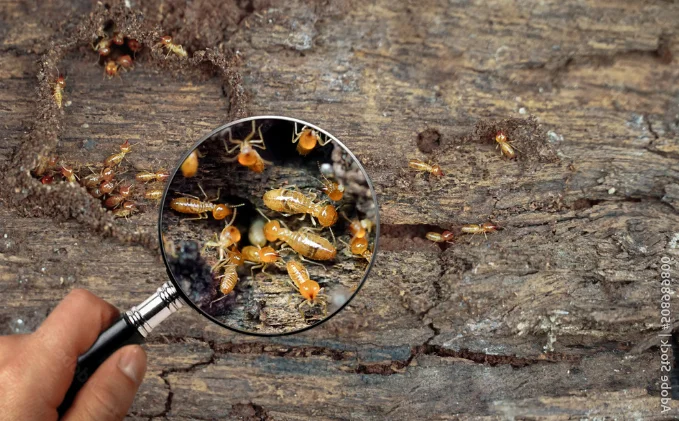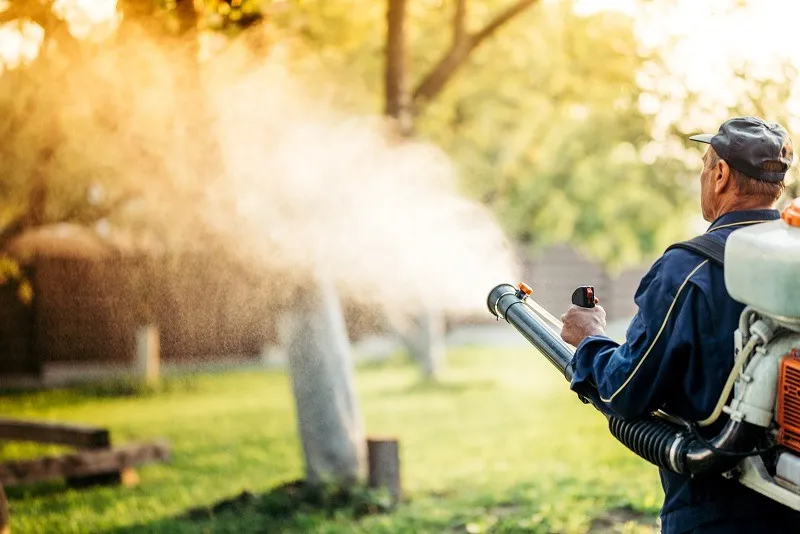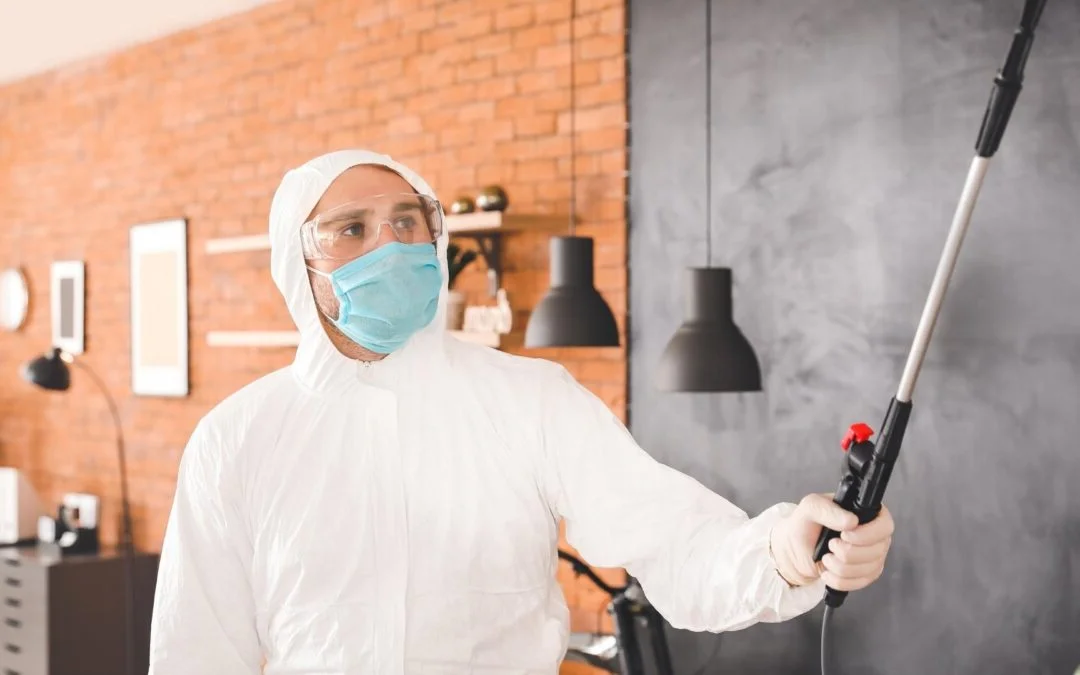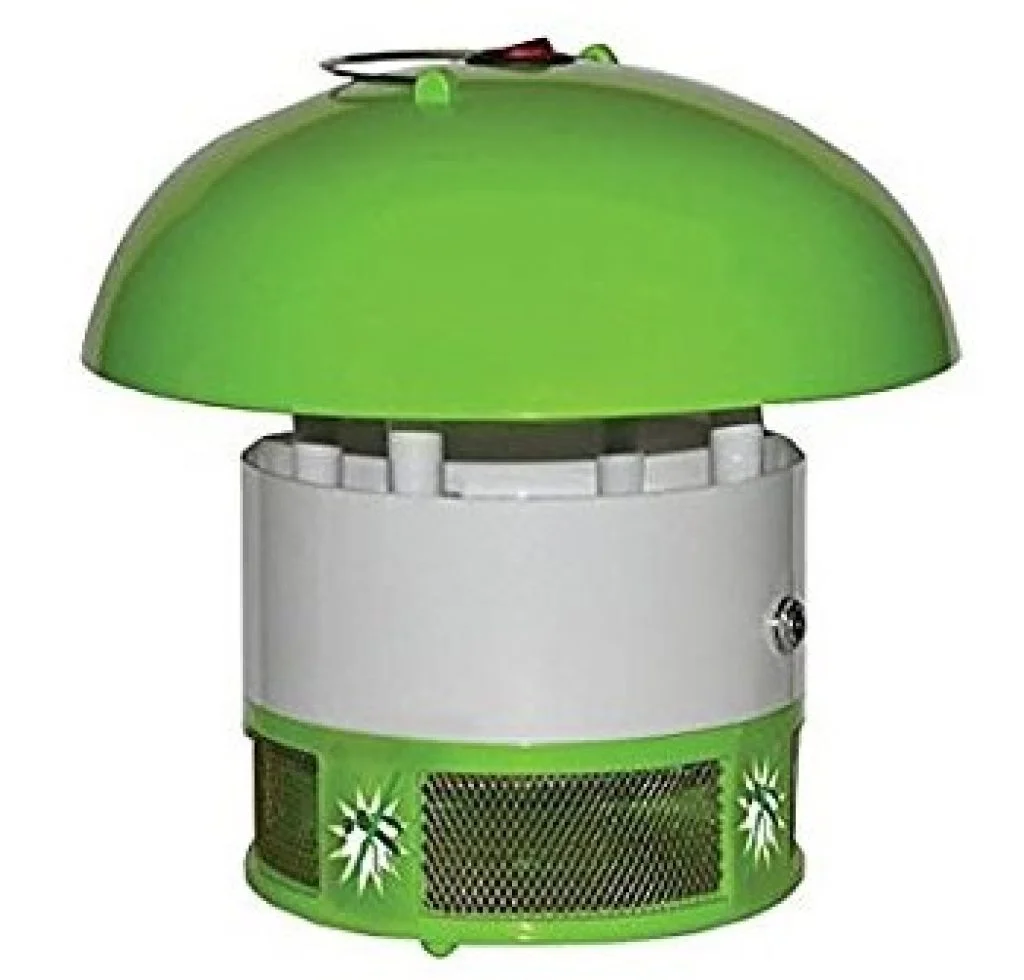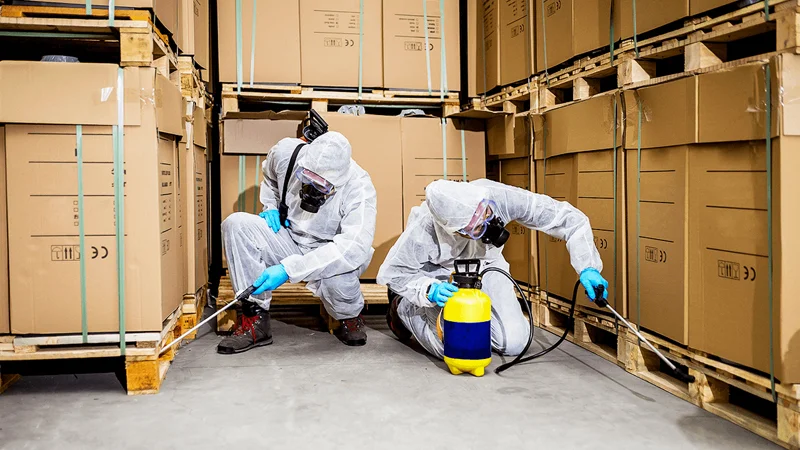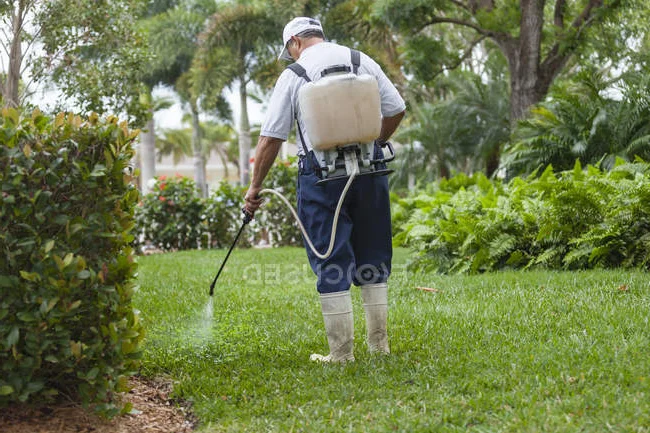From the humid coastal marshes to the northern upland forests, Louisiana presents distinctive pest challenges shaped by the state's unique combination of subtropical climate, abundant waterways, and diverse ecosystems. The Pelican State's warm, humid environment—characterized by mild winters, hot summers, and some of the highest annual rainfall totals in the continental United States—creates ideal conditions for numerous pest species to thrive year-round. Effective pest control in Louisiana requires specialized knowledge of these regional influences, architectural considerations, and targeted approaches that address the state's exceptional pest pressures.
Properties throughout Louisiana face ongoing pest challenges that can damage structures, affect health, impact the state's vital tourism and agricultural sectors, and diminish quality of life. Whether addressing termite threats in historic New Orleans, managing mosquitoes in suburban Baton Rouge, or controlling moisture-loving pests in northern parishes, local professional exterminators provide essential expertise tailored to Louisiana's specific conditions. This guide explores common Pelican State pest problems, effective management strategies including eco-friendly pest solutions, and why Louisiana's distinctive environmental factors make professional knowledge particularly valuable for lasting protection.
Dealing with persistent Louisiana pests? Our Pelican State specialists offer
emergency pest control
24/7 and comprehensive
property inspections throughout Louisiana.
Contact us today for prompt assistance!
Pest Control Challenges Specific to Louisiana
Louisiana's unique environment creates distinctive pest control challenges that require specialized approaches. Here's why pest management in the Pelican State demands expert attention:
-
Exceptional humidity and rainfall Louisiana consistently ranks among the most humid states in the nation, with annual rainfall averages exceeding 60 inches in some regions. This persistent moisture creates ideal breeding conditions for numerous pest species, accelerates wood decay that attracts termites and other wood-destroying organisms, and supports year-round pest activity levels rarely seen in drier or cooler states.
-
Extensive waterways The state features an intricate network of rivers, bayous, swamps, and marshlands, with approximately 15% of Louisiana's total area consisting of water surfaces. These abundant waterways create endless mosquito breeding habitat, support moisture-dependent pest populations, and allow certain pest species to spread quickly throughout watersheds, presenting unique challenges for comprehensive pest management.
-
Minimal winter pest dormancy Louisiana's mild winters, particularly in southern parishes, allow many pest species to remain active year-round with little or no dormancy period. This extended activity season means populations have more reproductive cycles annually, can develop larger overall numbers, and require continuous management approaches rather than the seasonal strategies effective in states with colder winters.
-
Historic architecture Louisiana's wealth of historic properties—from French Quarter buildings and plantation homes to raised cottages throughout the state—presents unique pest vulnerabilities due to period construction methods, preservationist limitations on treatment options, and generations of previous pest activity creating established harborage areas within structural components.
-
Flooding and tropical weather The state's susceptibility to hurricanes, tropical storms, and seasonal flooding creates cyclical pest pressures as rising waters displace established populations, excessive moisture triggers pest surges, and post-flood conditions provide ideal breeding environments for mosquitoes and moisture-loving insects that quickly capitalize on these disruptions.
Understanding these Louisiana-specific challenges is crucial for effective pest management. Professional pest control services develop customized treatment plans that address these regional factors, providing targeted protection for the Pelican State's distinctive environmental conditions.
Common Pests in Louisiana
Louisiana's subtropical climate and diverse ecosystems support numerous pest species that impact properties differently based on location, seasonal patterns, and surrounding environment. Here are the most common invaders that plague the Pelican State:
Termites
Professional termite inspection being conducted on a Louisiana property
Louisiana faces exceptional termite pressure from multiple species, with the native Eastern subterranean termite joined by the invasive Formosan subterranean termite that has established devastating colonies particularly in southern parishes. New Orleans and surrounding areas experience some of the highest Formosan termite concentrations in the nation, making the region one of the most challenging termite environments in the United States. These aggressive wood-destroyers cause millions in structural damage annually across the state.
Professional termite inspection and treatment combines thorough structural evaluation, soil treatment barriers, targeted colony elimination, and ongoing monitoring systems. For Louisiana's many historic homes, specialized inspection techniques identify hidden termite activity in period-specific construction elements, while preventative treatments provide critical protection. The state's year-round termite activity, particularly in southern regions, necessitates continuous vigilance and maintenance of protective barriers to prevent infestation in this high-pressure environment.
Mosquitoes
Mosquito treatment being applied in a Louisiana residential yard
Louisiana's abundant waterways, substantial annual rainfall, and warm climate create ideal breeding conditions for over 60 mosquito species found throughout the state. These biting pests remain active nearly year-round in southern parishes, with only brief activity reductions during the mildest winter periods. Beyond the significant nuisance they create for outdoor activities, Louisiana mosquitoes can transmit West Nile virus, Eastern Equine Encephalitis, and other diseases, presenting serious public health concerns.
Effective mosquito control combines environmental management to eliminate standing water, targeted larvicide treatments for permanent water features, and strategic adult mosquito treatments around landscape features and outdoor living spaces. Professional services create customized treatment schedules matching Louisiana's extended mosquito season, allowing families to reclaim outdoor enjoyment during warm months when mosquito activity would otherwise make outdoor spaces virtually unusable, particularly during evening hours.
Cockroaches
Professional cockroach treatment being applied in a Louisiana kitchen
Louisiana's warm, humid climate supports several cockroach species that thrive in both indoor and outdoor environments. American cockroaches (palmetto bugs) are particularly common in the state's urban areas, while German cockroaches frequently infest kitchens and bathrooms. These resilient pests reproduce rapidly in Louisiana's favorable conditions, creating persistent infestations that can spread between adjoining properties, particularly in multi-unit buildings and dense urban neighborhoods.
Professional cockroach control requires a methodical approach combining thorough inspection to identify harborage areas, targeted treatments of active zones, baiting programs designed for specific species, and ongoing monitoring to prevent reinfestation. The state's climate allows outdoor cockroach populations to thrive year-round, creating constant pressure on structures that necessitates comprehensive perimeter protection as part of effective management strategies, particularly for properties in historic urban areas or near abundant vegetation.
Fire Ants
Professional treating fire ant mounds in Louisiana lawn
Louisiana's landscape provides ideal habitat for fire ants, with these aggressive stinging insects establishing colonies throughout the state. These troublesome pests build distinctive mounds in lawns, agricultural areas, and along roadways, aggressively defending their territory when disturbed. Fire ant stings cause painful welts and can trigger serious allergic reactions in sensitive individuals, creating both nuisance and health concerns for families enjoying outdoor spaces.
Effective fire ant control combines broadcast treatment applications, individual mound treatments for established colonies, and preventative perimeter protection to limit new colony establishment. Professional management provides longer-lasting results than over-the-counter approaches, particularly in Louisiana's challenging climate where rapid reinfestation often occurs without comprehensive treatment protocols. For properties with children, pets, or outdoor entertaining areas, regular fire ant management is essential for comfortable landscape enjoyment.
Rodents
Setting up rodent control measures at a Louisiana home
Louisiana properties contend with several rodent species, with roof rats (particularly problematic in tree-lined neighborhoods), Norway rats (common in urban areas and near waterways), and house mice frequently invading structures. The state's mild climate allows year-round outdoor rodent activity, while abundant vegetation and food sources support substantial populations that create constant pressure on homes and businesses.
Comprehensive rodent control begins with thorough inspection to identify entry points, harborage areas, and activity patterns. Professional management combines exclusion work to seal potential access routes, targeted trapping systems, protected baiting methods where appropriate, and ongoing monitoring to prevent reinfestation. Louisiana's historic properties often present unique rodent management challenges due to multiple potential entry points in aging structures, requiring specialized approaches that respect architectural features while effectively addressing these persistent pests.
Eco-Friendly Pest Control for Louisiana Properties
Louisiana's precious natural resources—from the Mississippi Delta wetlands to the state's vital fishing industry, wildlife habitats, and plantation landscapes—create strong demand for environmentally responsible pest management approaches. Modern eco-friendly pest solutions protect homes and businesses while minimizing environmental impact through targeted application methods, reduced-risk product selections, and integrated management strategies that address root causes rather than symptoms.
Professional services implement Integrated Pest Management (IPM) principles that prioritize inspection, exclusion, habitat modification, and biological controls when possible, reserving targeted chemical interventions as a last resort. This sustainable methodology particularly benefits families with young children, properties near sensitive wetland ecosystems, and Louisiana's many waterfront communities where environmental stewardship is an essential consideration for watershed protection.
Environmental Commitment
Louisiana pest control specialists understand the importance of protecting the state's unique ecosystems, implementing management approaches that effectively address pest issues while respecting the Pelican State's environmental integrity and abundant waterways.
Below is a comparison of different eco-friendly pest control methods highlighting their benefits for Louisiana properties:
| Treatment Method |
Benefits |
Ideal Use in Louisiana |
| Targeted Application Methods |
Places minimal product amounts only where pests travel, harbor, or enter structures, dramatically reducing overall chemical use while maintaining effectiveness.
|
Urban properties where minimizing chemical exposure is important, homes with children and pets, and properties near Louisiana's abundant waterways and sensitive wetland ecosystems.
|
| Exclusion Techniques |
Creates physical barriers preventing pest entry without any chemical use, providing long-term protection with zero environmental impact or ongoing maintenance requirements.
|
Rodent prevention in both urban and rural properties, sealing against cockroach and termite entry, and protecting historic structures against pest invasion—particularly valuable for Louisiana's wealth of architectural treasures.
|
| Moisture Management |
Addresses the high-humidity conditions that attract and support many pest populations in Louisiana's climate, reducing harborage opportunities through environmental modifications.
|
Crawlspace moisture reduction through proper ventilation, landscape adjustments to improve drainage, and structural modifications that minimize water accumulation—critical factors in Louisiana's exceptionally humid environment.
|
| Biological Controls |
Utilizes natural predators, beneficial nematodes, or microbial agents to manage pest populations in environmentally sensitive ways with minimal impact on non-target organisms.
|
Fire ant management in sensitive areas, mosquito control near waterways, and lawn pest management for properties bordering natural habitats or agricultural operations where environmental sensitivity is essential.
|
| Reduced-Risk Products |
Employs newer generation pesticides and botanical-based solutions designed specifically for lower environmental impact with faster environmental breakdown.
|
Properties near Louisiana's rivers, lakes, and bayous, homes with organic gardens, seafood industry facilities with specific production requirements, and waterfront properties where water quality protection is paramount.
|
Specialized Pest Control Services in Louisiana
Professional Termite Inspection & Treatment
Louisiana's position in the Formosan termite zone demands comprehensive inspection and treatment protocols beyond standard approaches used in states with lower termite pressure. Our specialized termite inspection services utilize advanced detection methods including thermal imaging, acoustic detection, and moisture mapping to identify hidden activity, particularly in historic structures where conventional methods may miss concealed colonies.
Treatment protocols combine soil barrier applications, targeted wood treatments, colony elimination systems, and ongoing monitoring tailored to Louisiana's year-round termite activity patterns. For Formosan-infested areas, expanded protection zones and specialized bait systems address these aggressive invaders' extended foraging range and aerial nesting behavior. Pre-construction treatments during new building provide critical protection during Louisiana's peak swarming seasons, while existing structure services restore and maintain protective barriers compromised by the state's high rainfall and flooding events.
Comprehensive Mosquito Management
Louisiana's abundant standing water and extended mosquito season create intense pressure requiring multi-faceted mosquito control strategies. Our comprehensive management begins with property assessment identifying breeding sites, harborage areas, and landscape features supporting mosquito development. Treatment protocols combine larviciding of permanent water features, targeted adult mosquito applications around landscape structures, and recurring barrier treatments maintaining protection throughout Louisiana's extended activity season.
For properties near wetlands, waterways, or flood-prone areas, expanded protection zones and higher service frequency address the constant pressure from surrounding mosquito habitat. Post-flooding remediation provides targeted intervention when standing water creates ideal breeding conditions, while long-term environmental modification recommendations reduce property vulnerability to seasonal mosquito surges. For outdoor entertainment areas, special event preparation ensures mosquito-free enjoyment during Louisiana's warm evenings when biting activity typically intensifies.
Residential & Commercial Pest Control Throughout Louisiana
Residential Pest Protection
Louisiana homes face varied pest challenges influenced by location, architectural style, and surrounding environment. Residential pest protection programs are tailored to address the specific needs of different Louisiana properties, from historic New Orleans shotgun houses to Acadian cottages, suburban developments, and rural plantation homes throughout the state.
Professional services offer customizable protection plans against Louisiana's most common household pests, with particular emphasis on preventing termite damage, managing moisture-loving pests like cockroaches, controlling mosquitoes and fire ants in outdoor spaces, and maintaining comfortable living environments free from nuisance and health-threatening pests. Treatment schedules align with Louisiana's year-round pest pressure, providing continuous protection against the state's minimal-dormancy pest populations.
Commercial Pest Control
From restaurants in the French Quarter to hotels throughout New Orleans, healthcare facilities in Baton Rouge, seafood processing operations along the coast, and manufacturing facilities statewide, Louisiana businesses require specialized pest management programs that protect operations, reputation, and regulatory compliance. Commercial pest control services address distinct industry challenges with targeted protocols designed for each business category.
Professional commercial services provide comprehensive documentation supporting audit requirements, discreet service scheduling that minimizes operational disruption, and emergency response capabilities for time-sensitive situations. Louisiana's vital tourism and hospitality industry particularly benefits from effective pest management that preserves visitor experiences in hotels, restaurants, and entertainment venues, while food processing operations receive specialized protocols addressing their unique regulatory requirements.
From residential pest protection plans to customized
commercial pest control solutions, we have properties throughout Louisiana covered –
schedule your service now and keep your
property pest-free year-round!
Why Choose Local Experts in Louisiana?
When it comes to protecting your Louisiana property from pests, working with local experts offers distinct advantages. A local pest control company understands the region's specific challenges and truly cares about the communities they serve. Here's why choosing local Louisiana specialists makes a significant difference:
-
Knowledge of regional pest patterns Local technicians understand how Louisiana's diverse regions—from the coastal parishes to the northern uplands—experience different pest pressures and seasonal cycles. This regional expertise allows for precisely targeted treatments and timing based on local experience rather than generic approaches used by national companies unfamiliar with Pelican State specifics.
-
Experience with Louisiana architecture Local experts are familiar with the distinctive construction methods found throughout the state, from raised Creole cottages to shotgun houses, plantation homes, and contemporary construction. This architectural knowledge helps identify vulnerable areas and implement effective protection strategies specifically suited to each property type.
-
Understanding of climate influences Louisiana's exceptional humidity levels, abundant rainfall, and minimal winter dormancy periods create unique pest dynamics rarely seen in other states. Local professionals understand these climatic influences and adjust treatment approaches accordingly, providing more effective long-term protection.
-
Familiarity with local regulations Louisiana parishes maintain specific regulations regarding pesticide applications, historic district requirements, and treatment methods, particularly around waterways and sensitive ecosystems. Local pest professionals navigate these requirements daily, ensuring all services remain fully compliant with state and municipal ordinances.
-
Tropical weather responsiveness When hurricanes, tropical storms, or flooding affect Louisiana communities, local pest control companies understand the unique post-event pest surges that follow these disruptions. Local teams can quickly implement targeted approaches addressing these weather-driven pest pressures based on decades of regional experience.
By choosing local professional exterminators with deep knowledge of Louisiana's specific pest challenges, property owners receive more effective, regionally-appropriate solutions than generic approaches used by those unfamiliar with the Pelican State's unique conditions.
Regional Pest Control Services Throughout Louisiana
Different regions of Louisiana face unique pest challenges based on geography, climate variations, and environmental features. Professional pest control specialists understand these regional differences:
Greater New Orleans & Southeast Louisiana
Including: New Orleans, Metairie, Kenner, Hammond, Slidell, Houma, Thibodaux
This densely populated region experiences some of Louisiana's most intense pest pressures, particularly from Formosan termites that have established devastating colonies throughout the area. The region's historic architecture, abundant tree canopy, and proximity to Lake Pontchartrain and Mississippi River wetlands create unique pest vulnerabilities. Urban areas contend with significant cockroach and rodent challenges in older neighborhoods, while the region's high rainfall and humidity levels support year-round mosquito activity with minimal winter reduction. Post-flooding pest surges are common following heavy rain events, requiring specialized response protocols.
Capital Region/Greater Baton Rouge
Including: Baton Rouge, Denham Springs, Gonzales, Plaquemine, Port Allen, Zachary, Baker
Louisiana's capital region combines urban density with expanding suburban communities and industrial corridors along the Mississippi River. The area faces substantial termite pressure from both Eastern subterranean and Formosan species, while the region's extensive park systems, green spaces, and drainage canals support significant mosquito populations. Newer developments often experience different pressures as construction disturbs existing pest habitats, while older established neighborhoods contend with mature trees and aging infrastructure that provide ideal harborage for various pest species.
Acadiana/Southwest Louisiana
Including: Lafayette, Lake Charles, New Iberia, Crowley, Opelousas, Sulphur, Abbeville
This culturally distinct region combines Cajun influences with agricultural operations and industrial centers, creating diverse pest management needs. The area's proximity to coastal marshlands and abundant waterways supports significant mosquito pressure, while the region's rich soil and high water table create favorable conditions for termite activity. Rural properties face different challenges than urban centers, with agricultural influences affecting pest movements, particularly during seasonal transitions. The region's susceptibility to hurricane impacts also creates periodic pest surges following weather events.
North & Central Louisiana
Including: Shreveport, Monroe, Alexandria, Natchitoches, Ruston, Pineville, West Monroe
Northern Louisiana features more upland forest environments and slightly different climate patterns than southern parishes, creating distinct pest dynamics. The region experiences somewhat greater seasonal temperature fluctuations, providing slight winter dormancy for some pest species, though still minimal compared to northern states. Urban centers like Shreveport contend with established rodent and cockroach populations in older neighborhoods, while rural properties face more wildlife and agricultural pest pressures. The region's forests and waterways support significant tick and mosquito populations during warm months, particularly in recreational areas.
Top Cities for Pest Control in Louisiana
Professional pest control services are available throughout the Pelican State. Below are some of the major Louisiana cities where quality pest management is especially important:
New Orleans
As Louisiana's largest city and cultural center, New Orleans presents diverse pest management challenges across its varied neighborhoods and architectural styles. The city experiences exceptionally high Formosan termite pressure, with some of the most aggressive termite colonies in the nation threatening both residential and commercial structures. Historic areas like the French Quarter feature centuries-old buildings with complex structural systems that provide harborage opportunities for numerous pest species, while the city's abundant tree canopy and drainage systems support significant mosquito populations. New Orleans' position below sea level, high water table, and substantial annual rainfall create persistent moisture conditions that support both termite and cockroach activity year-round. The urban density creates ongoing rodent challenges, particularly in older neighborhoods with established infrastructure. Comprehensive pest management in this unique environment requires specialized approaches that balance preservation requirements with effective protection against the city's extraordinary pest pressures.
Baton Rouge
Louisiana's capital city combines historic neighborhoods with newer suburban developments and university-influenced areas, creating varied pest management needs. Baton Rouge's position along the Mississippi River creates moisture corridors that support mosquito breeding and influence termite activity in surrounding areas. The city's substantial tree coverage provides harborage for both Formosan and Eastern subterranean termites, while the humid climate supports year-round cockroach and ant activity with minimal winter reduction. Established neighborhoods contend with mature landscaping and aging infrastructure that provide harborage opportunities for various pests, while newer developments often experience different pressures as construction disturbs existing pest habitats. The city's extensive park systems and green spaces provide habitat corridors for wildlife and insect species that can affect nearby properties, requiring comprehensive management approaches addressing both structural and landscape pest pressures.
Shreveport
As northern Louisiana's major urban center, Shreveport experiences somewhat different pest dynamics than southern parishes. The city's position along the Red River creates moisture corridors that support significant mosquito pressure during warm months, while the blend of urban density and surrounding natural areas creates diverse pest challenges. Shreveport properties contend with established termite populations, though with somewhat lower Formosan termite pressure than New Orleans. The city's mix of historic neighborhoods, mid-century developments, and newer suburban areas creates varied structural vulnerabilities requiring tailored approaches. Northern Louisiana's slightly more pronounced seasonal temperature shifts provide minimal winter pest dormancy for some species, though still far less than northern states. Comprehensive pest management in Shreveport emphasizes year-round monitoring with seasonal adjustments addressing the region's specific pest cycles.
Lafayette
Located in the heart of Acadiana, Lafayette combines Cajun cultural heritage with modern development, creating unique pest management needs. The city's position near coastal wetlands and numerous waterways supports significant mosquito and termite pressure, while the humid climate and abundant vegetation provide ideal conditions for various ant species, including destructive fire ants. Lafayette's blend of traditional architecture and newer construction requires flexible pest management approaches addressing both established and emerging pest populations. The region's rich soil supports substantial termite activity, while the subtropical climate allows year-round pest pressure with minimal seasonal dormancy. Lafayette properties benefit from comprehensive protection programs emphasizing moisture management, landscape pest control, and structural protection addressing the city's specific environmental influences and architectural characteristics.
What Our Louisiana Clients Say
"Living in New Orleans' historic district means constant vigilance against termites. Their comprehensive inspection identified Formosan activity in an exterior wall before any damage occurred, and their targeted treatment approach protected our property while respecting its historic character."
- Michael & Sarah T., New Orleans
★★★★★
"After years of mosquitoes making our backyard unusable during summer months, their customized treatment program has completely transformed our outdoor living experience in Baton Rouge. We can finally enjoy our patio from spring through fall without being driven indoors."
- Jennifer L., Baton Rouge
★★★★★
"As a restaurant owner in the French Quarter, pest prevention isn't optional—it's essential for our reputation. Their commercial program provides thorough protection with discreet service that never disrupts our guests, while their documentation makes health inspections stress-free."
- David W., New Orleans
★★★★★
Frequently Asked Questions
How does Louisiana's Formosan termite threat differ from termite risks in other states?
Louisiana, particularly the New Orleans region, faces a dramatically different termite threat compared to most other states due to the established presence of Formosan subterranean termites. Several key factors intensify this challenge: First, Formosan colonies are substantially larger than native termite species, with mature colonies containing millions of individuals compared to several hundred thousand in Eastern subterranean termite colonies, creating more aggressive structural attacks. Second, Formosan termites consume wood at approximately 5-7 times the rate of native species, accelerating damage progression significantly. Third, these invasive termites establish aerial nests that allow colonies to survive without ground contact, circumventing traditional soil treatment barriers that effectively control native species. Fourth, Louisiana's minimal winter dormancy period allows nearly year-round Formosan foraging activity, while the state's exceptional humidity creates ideal conditions for colony expansion. Fifth, decades of established presence in urban areas has allowed colonies to develop extensive networks throughout neighborhoods, creating constant reinfestation pressure. Our termite management programs account for these Formosan-specific factors through comprehensive inspection protocols targeting aerial nest locations, expanded treatment zones that address the species' extended foraging range, specialized monitoring systems designed for these aggressive pests, and maintenance schedules calibrated to Louisiana's year-round termite activity patterns.
What special pest management considerations apply to historic New Orleans properties?
Historic New Orleans properties require specialized pest management approaches that balance effective protection with preservation of irreplaceable architectural features. Several unique considerations guide our historic property services: First, comprehensive inspection techniques identify pest activity in period-specific construction elements like cypress structural timbers, lathe and plaster walls, and historic building techniques not commonly found elsewhere. Second, treatment planning incorporates preservation-minded methods that minimize alterations to original materials, with particular attention to National Register properties and French Quarter buildings under strict preservation guidelines. Third, our termite management programs for historic structures include expanded monitoring systems specifically targeting Formosan termite activity in these vulnerable buildings, with customized treatment protocols designed for the area's exceptional termite pressure. Fourth, moisture management recommendations address the unique challenges of below-sea-level properties with high water tables that create persistent humidity affecting both building materials and pest activity. Fifth, for properties with courtyards, balconies, and other distinctive New Orleans architectural features, we implement specialized treatment approaches that protect these unique elements while maintaining aesthetic integrity. By blending modern pest management science with preservation-minded techniques, we protect Louisiana's historic treasures from pest damage while respecting their architectural and cultural significance.
How should Louisiana property owners prepare for post-flooding pest surges?
Louisiana's susceptibility to heavy rainfall events, tropical systems, and seasonal flooding creates predictable pest surges that require proactive management. We recommend a comprehensive approach addressing several key factors: First, once water recedes, immediately remove water-damaged materials that provide ideal harborage for moisture-loving pests including cockroaches, silverfish, and various beetles attracted to damp conditions. Second, implement enhanced mosquito management within 5-7 days after flooding subsides, as standing water remnants create ideal breeding habitat that can produce massive mosquito emergences approximately 7-10 days post-flooding. Third, inspect and reinforce rodent exclusion measures, as displaced populations aggressively seek new shelter in structures surrounding flooded areas. Fourth, for properties with crawlspaces affected by rising water, implement thorough drying measures combined with targeted treatments of soil and structural elements to deter termites and other wood-destroying organisms attracted to moisture-compromised materials. Fifth, schedule comprehensive perimeter treatments immediately post-flood focused on ant colonies displaced by rising water, as these colonies rapidly relocate to higher ground and frequently establish new nests within structural elements. Our post-flooding protocols incorporate all these elements plus detailed inspection for pest activity in areas most vulnerable to water effects, providing crucial protection during these high-risk periods when multiple pest populations simultaneously seek new habitats.
How do you protect Louisiana's fishing industry properties from cockroach infestations?
Louisiana's vital seafood processing facilities, distribution centers, and waterfront properties face exceptional cockroach pressure requiring specialized management approaches. Our programs address several industry-specific challenges: First, product selection emphasizes formulations approved for food processing environments that meet both FDA and Louisiana Department of Health requirements while providing effective control in these high-moisture settings. Second, facility-wide treatment protocols incorporate areas often overlooked in standard services, including drainage systems, equipment undersides, and wall void spaces where cockroaches establish persistent harborage in these humid environments. Third, comprehensive exterior barrier treatments address the constant pressure from outdoor cockroach populations thriving in Louisiana's subtropical climate, with expanded perimeter zones that intercept pests before they enter processing areas. Fourth, treatment scheduling incorporates flexible timing working around processing operations while maintaining sufficient frequency to prevent population establishment in these high-risk facilities. Fifth, our documentation systems provide detailed service records supporting both regulatory compliance and quality assurance programs essential for seafood industry operations. This comprehensive approach protects Louisiana's critical fisheries infrastructure while ensuring product safety and operational continuity in these specialized facilities facing some of the state's most intense cockroach pressure.
Louisiana Service Coverage Map
Seasonal Pest Guide for Louisiana
Spring (March-May)
- Termite swarms emerge
- Ant colonies expand rapidly
- Mosquito breeding accelerates
- Cockroach activity increases
Recommendation: Schedule annual termite inspection, implement mosquito management before population explosions, and address emerging ant activity with comprehensive perimeter treatments.
Summer (June-September)
- Mosquito activity at peak levels
- Fire ant mounds multiply rapidly
- Cockroach populations surge
- Rodent activity shifts toward structures seeking air conditioning
Recommendation: Maintain regular mosquito treatments, implement fire ant management for lawn areas, and reinforce barriers against heat-seeking pests during Louisiana's hottest season.
Fall (October-November)
- Rodents seek indoor shelter
- Some ant species move colonies indoors
- Cockroach activity remains high
- Occasional secondary termite swarms possible
Recommendation: Implement rodent exclusion before winter, reinforce perimeter treatments, and address remaining outdoor pest activity before cooler weather arrives.
Winter (December-February)
- Indoor pest activity increases
- Rodent problems peak
- Cockroach infestations persist in heated structures
- Reduced but continued mosquito activity in southern parishes
- Termite colonies remain active below ground
Recommendation: Focus on interior pest management for rodents and cockroaches while maintaining termite protection, as Louisiana's mild winters allow continued pest activity for many species.
Louisiana's mild climate creates minimal seasonal dormancy for many pest species, with year-round activity common particularly in southern parishes. Professional pest control services adjust their strategies throughout the year to address these patterns, providing continuous protection against the state's persistent pest pressure with intensified efforts during spring and summer population surges.

